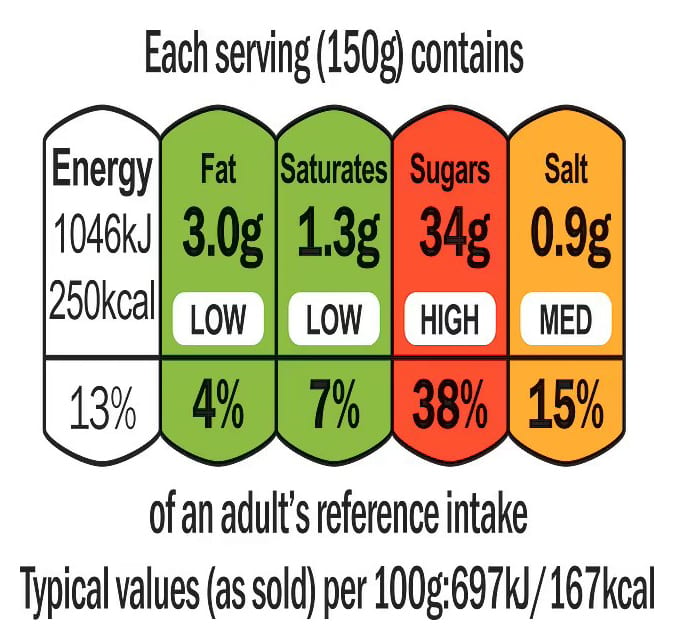Feedback on FOP Labeling Continues to Pour In


Brad Addington
The International Food Additives Council, New Hampshire-based North Country Smokehouse and the National Alliance for Hispanic Health are among the parties that have weighed in.
In January, the U.S. Food and Drug Administration proposed requiring a front-of-package nutrition label for most packaged foods. The proposed “Nutrition Info box” provides information on saturated fat, sodium and added sugars content in a simple format showing whether the food has “Low,” “Med” or “High” levels of these substances.
FDA is inviting comments on the proposal through May 16, 2025. We reported in March on several parties that had already weighed in on the proposal. I said at the time that Packaging Strategies would continue to monitor the submitted comments and share a variety of perspectives with our audience, and I’m following up on that commitment here.
As someone who routinely uses potassium salt to reduce my sodium intake, I was intrigued by the concerns expressed by the International Food Additives Council (IFAC) with regard to sodium.
ADVERTISEMENT
IFAC urges FDA to finalize the “Use of Salt Substitutes to Reduce the Sodium Content in Standardized Foods” Proposed Rule and “Voluntary Sodium Reduction Goals: Target Mean and Upper Bound Concentrations for Sodium in Commercially Processed, Packaged, and Prepared Foods (Draft Guidance for Industry, Edition 2)” Guidance, before finalizing the “Food Labeling: Front-of-Package Nutrition Information” Proposed Rule.
“If the front-of-package (FOP) nutrition labeling Proposed Rule is finalized prior to the aforementioned, the FDA would be placing food manufacturers at an unnecessary and costly disadvantage in their reformulation efforts,” IFAC argues. “These costs extend beyond financial burdens — such as reformulation expenses, label redesigns, and product distribution — to also impacting consumers, as sodium-reduced products would take longer to reach the market. Additionally, if the FOP rule is implemented prematurely (ahead of the others), consumers may stop purchasing products they previously identified as high in sodium without reassessing them.”
Meanwhile, New Hampshire-based North Country Smokehouse expressed its own concerns about the proposed FOP nutrition labeling.
“The proposed ‘High,’ ‘Medium,’ and ‘Low’ designations for saturated fat, sodium, and added sugars lack the context necessary for informed dietary decisions,” North Country Smokehouse says. “Naturally cured and smoked meats — like ours — are prepared using traditional methods that may result in naturally higher sodium content but without the use of artificial preservatives, stabilizers, or sweeteners. These are not comparable to the highly engineered formulations commonly found in industrial food systems.”

Packaging Verification Systems Inc. supports the introduction of FOP nutrition labeling, adding that it encourages the adoption of a color-coded traffic light labeling system, similar to those successfully implemented in countries like the United Kingdom and France.
Courtesy of Packaging Verification Systems Inc.

Packaging Verification Systems Inc. supports the introduction of FOP nutrition labeling, adding that it encourages the adoption of a color-coded traffic light labeling system, similar to those successfully implemented in countries like the United Kingdom and France.
Courtesy of Packaging Verification Systems Inc.
North Country Smokehouse adds: “Classifying these nutrient levels in isolation from ingredient integrity, sourcing practices, or serving size misrepresents the overall quality and wholesomeness of such products. It reduces an important and nuanced nutritional conversation into a binary alert system that can mislead rather than educate consumers.”
Finally, it was interesting to note that two quite disparate groups — Packaging Verification Systems Inc. and the National Alliance for Hispanic Health — offered similar suggestions.
Packaging Verification Systems Inc. said it strongly supports the introduction of FOP nutrition labeling, adding that it encourages the adoption “of a color-coded traffic light labeling system, similar to those successfully implemented in countries like the United Kingdom and France. The traffic light system provides an immediate visual cue to consumers, using green, amber, and red color codes to indicate low, moderate, or high levels of nutrients such as sugar, salt, and fat.”
Similarly, the National Alliance for Hispanic Health recommended that the FDA consider color coding (e.g., green for low, yellow for medium, red for high) to provide visual cues that aid in quick assessment.
With the comment period running through May 16, Packaging Strategies will continue to monitor the submitted comments and will share a variety of perspectives with our audience.


